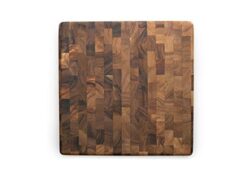
When it’s cold outside and you’re paying to heat your home, you don’t want to feel a chill breeze whipping through your living room—especially if its source is a mystery. Perhaps you’ve already insulated your electrical outlets, installed weatherstripping around your windows and doors, and caulked all the holes, gaps, and cracks you could find, but still can’t detect the draft.
While you can always try using a candle to locate the air leaks, that’s not exactly the most precise method. Instead, why not use an infrared thermometer? Not the kind you point at a person’s forehead to take their temperature, but one designed for this and other household tasks. Here’s why it’s worth investing in an infrared thermometer, and a few of our favorite models.
Household uses for infrared thermometers
The infrared thermometers used for finding air leaks look similar to the ones used for medical purposes, but typically are orange and black, or yellow and black, instead of white, gray, or light blue. This is probably a good time to mention that household infrared thermometers shouldn’t be used to take a person’s temperature.
Apart from that, these digital devices come in handy for a variety of household tasks, including but not limited to:
Locating air leaks and drafts
Checking the temperature of walls, ceilings, and other areas in your home to see if they need to be better insulated
Measuring the temperature of the wall surrounding a circuit breaker box or electrical outlet if you smell or otherwise suspect a potential electrical fire, or faulty wiring
Cooking, baking, grilling, frying, and other aspect of food preparation
Automotive temperature measurement
Checking the temperature of metal slides and/or other playground equipment before a child uses it on a hot day
Checking the temperature of the pavement in the summer to see if it’s too hot for your dog’s paws
What to look for when purchasing an infrared thermometer
It’s not hard to find a solid infrared thermometer for your basic household needs for between $15 and $25—or even less when they’re on sale. These tend to be easy to use and read. The more bells and whistles one has, the less straightforward operating it becomes, so unless you’re going to use it for a specific purpose that requires a special feature, simpler models are usually your best bet.
There are, however, some differences among the entry-level infrared thermometers that you may want to consider before making your purchase. For instance:
Temperature range
Adjustable emissivity (to accurately measure temperatures on a variety of different surfaces)
Water and/or dust resistance
Rechargeable (usually via USB cable) versus battery operated
The best infrared thermometers for household tasks
To help you take some of the guesswork out of making a purchase, here are some of our favorite infrared thermometers:
Best overall
Inkbird Rechargeable Infrared Thermometer ($24.99)
Though rechargeable infrared thermometers cost slightly more than those that are battery operated; it’s worth it not to have to deal with or pay for AA or AAA batteries, and simply plug in a USB cable instead. Fully charged, the thermometer can last up to 12 hours with backlight, and has a range of -58℉ to 1022℉(-50℃ to 550℃). It’s also easy to operate, with a single button controlling all the settings and functions.
Best budget option
Etekcity Infrared Thermometer Temperature Gun ($14.99)
This solid, basic option gets the job done. It’s battery operated, but the thermometer comes with two AAA batteries, so that’s convenient. It’s temperature range of -58° to 842°F (-50° to 450°C) isn’t as wide as other models, but it should be sufficient for most household uses.
Best for cooking
SOVARCATE Infrared Thermometer ($18.69)
The ability to adjust this thermometer’s emissivity makes it easy to get accurate temperature readings on hot oil, ice, and any other food or cooking surface—as does a temperature range of -58°F to 1112°F(-50°C to 600°C). In addition to two AAA batteries, a meat thermometer with a stainless steel probe is included with the purchase.
Best automotive option
ThermoPro TP30 Infrared Thermometer Gun ($19.99)
This versatile thermometer can be used for any household tasks—including in the garage. The display retains the minimum, maximum, and average temperature of the last scan, which is especially helpful in automotive work, like checking engine temperatures.
Best for construction
Ketotek Digital Infrared Thermometer Temperature Gun ($21.99)
This heavy-duty infrared thermometer with a scratch-resistant UV coating can withstand more than the usual wear-and-tear, while still retaining the sensitivity necessary for cooking.








